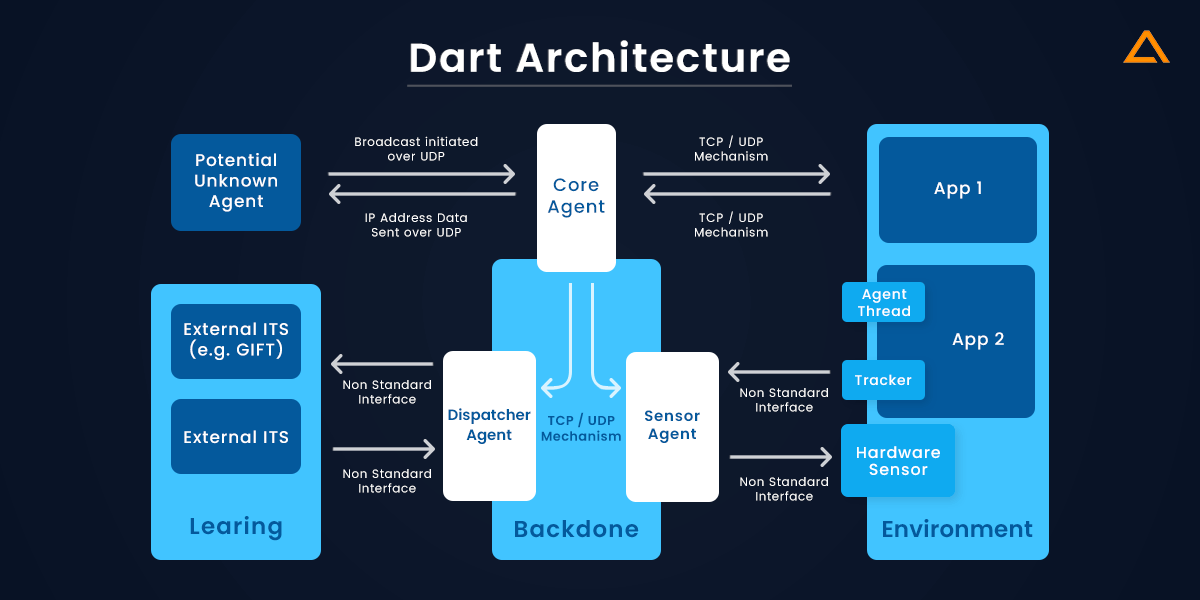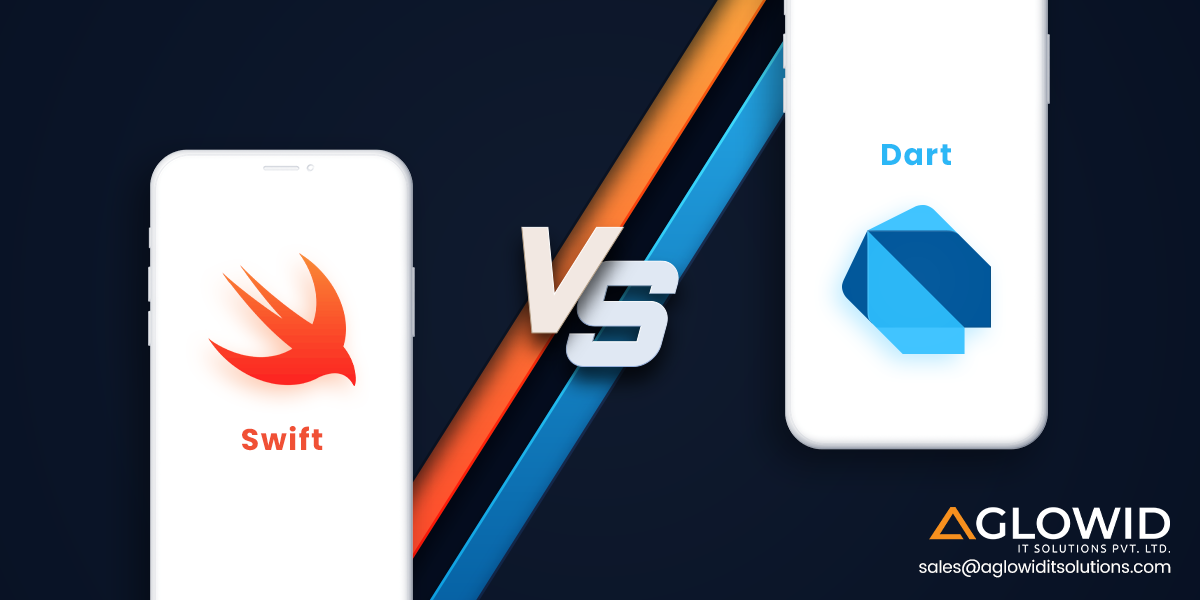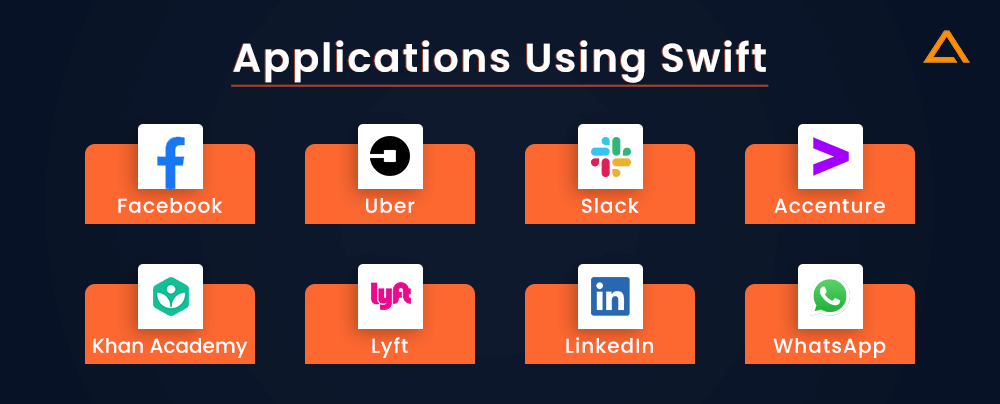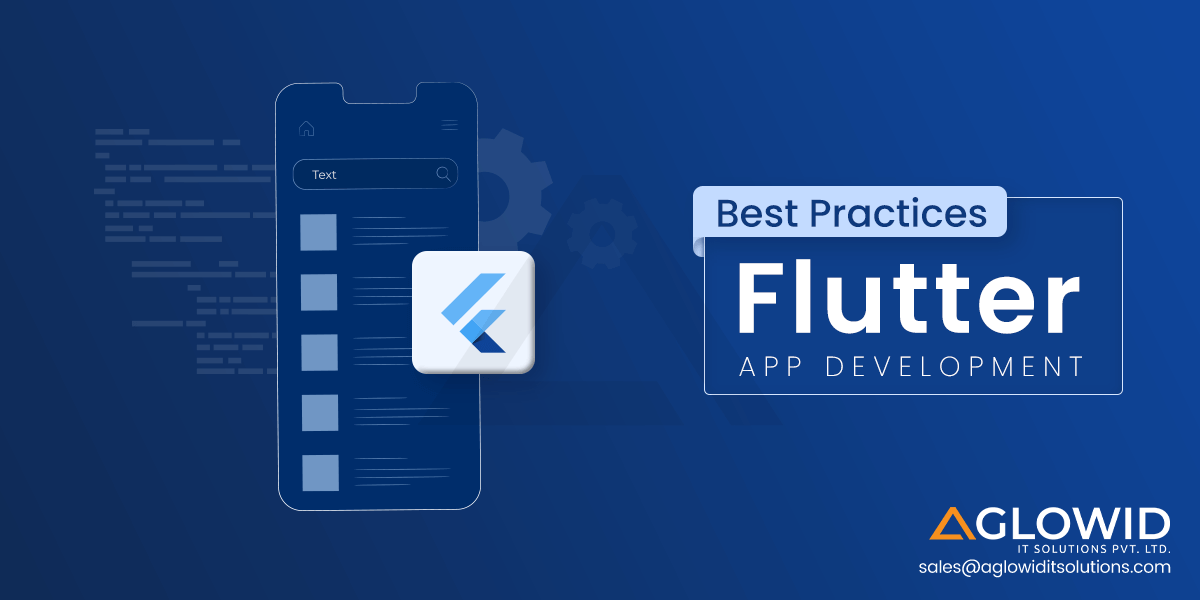Quick Summary:
The argument over programming languages and frameworks never seems to conclude. Everyone wants to know which technology is ideal for writing code and developing high-quality, user-friendly mobile apps. Swift vs Dart the two app development technologies that can meet your requirements are. You can compare and contrast each framework’s features, benefits, and drawbacks before deciding which framework is ideal for your app concept. This post will examine two of the most popular programming languages in recent years: Dart and Swift.
When it comes to application development, there are several paths to success. Every app development process is either somewhat or significantly different from the others. The developer’s job has become more complex but also more enjoyable as technology has advanced.
The development of an application will necessitate a great deal of dedication and perseverance. The programming language is the most crucial thing to understand. However, not every programming language is suitable for every platform. Swift and Dart are both programming languages designed for a new generation with numerous improvements.
Let’s have a look at the similarities and differences between two popular iOS programming languages.
What is Swift?
Apple’s open-source programming language specialized in the creation of native iOS apps. It was released in 2014 and quickly gained popularity, dethroning Objective-C as the most popular platform for developing native iOS apps. On GitHub, it has 57.5K ratings and 9.2K forks.
Swift is well-known for its forward-thinking approach, coding speed, and documentation. Because it is not solely committed to mobile app development, it is designed to give security and reasonable performance rates for every piece of software created with it. Swift is also suitable for online, desktop, and server applications. Software written in Swift is used in Apple products, including televisions, watches, and iPads.
XCode is the primary development environment for native apps written in the Swift programming language. Swift is said to make writing software easy, rapid, and based on well-known and loved patterns by the community.

Features of Swift
- Open-source
- Safety
- Fast
- Simple Syntax
- Multiplatform support
- Objective C compatibility
What is Dart?
Dart is a Google-developed programming language that was launched in 2011. It might be used to create Android and iOS apps from a single codebase. This open-source mobile SDK is also becoming one of the industry’s most well-known standard advancements for mobile apps.
Dart’s core framework is known as Flutter, which is one of the reasons for the language’s increasing popularity. Flutter has already established itself as the market leader, with mobile app developers praising it. The community likes how the entire development process is centred on interchangeable widgets. They’re utilized to provide dependable and durable user interfaces. The documentation is well-written and informative, which aids in the creation of new projects and ongoing maintenance.
Dart apps can provide a native-like experience for both Android and iOS with a single code base, saving time and money over developing separate native apps for each platform.

Features of Dart
- Concurrency
- Extensive Library
- Flexible Compilation
- Type-Safe
- Community
Stats Comparision between Swift and Dart
- According to the StackOverflow developer survey 2021, Dart has 02%, and Swift with 5.1% in the developer community’s most commonly used programming language.
- 77% love to work with Dart, and 63.56% love to work with Swift.
- 99% of people want to work with Dart, 4.74% love to work with Swift.
- In the Top paying technologies section, Swift pays $58,910, and Dart pays $32,986.
- According to Stack Share, 2208 companies use Swift in their tech stack, including Cred, Apple, Walmart.
- According to Stack Share, 125 companies use Dart in their tech stack, including Google, CRED, mews.
- According to Google Trends, the query search worldwide in the past five years shows that most queries are for Swift with an average of 41 queries and 10 for the dart.
Swift vs Dart: Pros and Cons
Let’s take a look at the pros and cons of each of them, respectively.
Pros and Cons of Swift
| Pros | Cons |
| Rapid development process | Language is still relatively young |
| Easier to scale | Limited talent pool |
| Improved performance, Speed, and Safety | Poor interoperability with third-party tools and IDEs |
| Decreased memory footprint | Incomplete cross-platform support |
| Interoperability with Objective-C | Lack of support for earlier iOS versions |
| Automatic memory management with ARC | – |
| Cross-Device Support | – |
| Vibrant open source community and learnability | – |
Pros and Cons of Dart
| Pros | Cons |
| Easy to learn | Minimal online resources |
| Availability of Document | Hard to find jobs |
| High Performance | Currently in development |
| Stable & produce a real-time application | Absence of native support |
| Object-oriented programming language | – |
| uses AOT and JIT compilation | – |
| Supports Dart-pad interface | – |
Swift vs Dart: Tabular Comparision
| Factors | Swift | Dart |
| Developed By | Apple | |
| Paradigm | Multi-Paradigm | Multi-Paradigm |
| Designed By | Chris Lattner, Doug Gregor, John McCall, Ted Kremenek, Joe Groff, and Apple Inc. | Lars Bak & Kasper Lund |
| Initial Release | 2 June 2014 | 10 October 2012 |
| Stable release | 28 June 2021 | 8 September 2021 |
| Latest Version | 5.4.2 | 2.14.1 |
| Learning Curve | Easy to learn | Easy to learn |
| Design | iOS native | As good as Swift but quicker. |
| Syntax | import UIKit
var myString = “Hello, World!” print(myString) |
main() {
print(“Hello World!”); } |
| Talent Pool | More Popular among developers | Less famous but works for Android too |
| Job Opportunity | There are more job opportunities as a Swift developer | There are comparatively fewer job opportunities as a Dart developer |
| Salary | $98,986/yr | $52,522/yr |
| Coding Speed | Have a good speed | Slight quicker than Swift |
| Github stars | 57.5K stars | 1.5K stars |
| Operating System | Apple Operating System | Cross-Platform |
| License | Apache 2.0 | BSD |
| File Extension | .swift, .SWIFT | .dart |
Detailed Comparison: Swift vs Dart
Many articles compare iOS app development using Swift and Dart using the same app. They analyze a variety of parameters while determining the differences in iOS development between these two technologies.
Installing Swift Vs Dart
The onboarding process is the initial step in developing an iOS app. This entails downloading and installing an IDE (Integrated development environment) tool that includes an SDK (Software development kit) to get started coding.
XCode, which must be installed on the macOS device, is required for Swift. That’s the only tool you’ll need to get started with Swift’s crucial native iOS development.
Dart necessitates a significantly larger toolbox. To create dart binaries for coding, we utilize XCode, an IDE like IntelliJ IDEA or Android Studio, and a Mac device. Swift takes fewer tools than a dart, and they are both relatively simple to configure.
Testing Dart vs Swift
Before being released to the app stores, every app should go through end-to-end testing. To eradicate the problems, you’ll need a lot of time and a keen eye for detail. Testing a dart application against a swift application is a very different experience.
Dart covers a wide range of testing techniques, including UI and functional level testing. Developers write their tests, which Dart drivers execute. Native iOS applications, on the other hand, are easier to test with swift testing. Swift performs an excellent job with its testing framework (XCTest). This style of testing applies to the following app components:
- UI modules
- Integration
- Performance
- Navigation
Build Time difference between Swift vs Dart
One of the most critical factors, especially for developers, is build time (how long it takes to produce the app file). In this situation, clean builds are usually compared to see which is faster: Swift vs Dart. Therefore, developers can add new features to the system faster and more efficiently as build times improve.
Both Swift and Dart include commands for measuring the time it takes to build a clean build. The ideal method is to use XCode, which is used to develop native iOS apps in both technologies.
When developing native apps, native programming languages such as Swift or Kotlin (for Android) are always deemed faster. These assertions are not false. For example, Dart may take three times longer for a quick project that takes 12 seconds to make a clean build. However, the additional dart will take less time because the framework speeds up after the initial clean build.
App Reloading Time Comparision Dart vs Swift
Reloading and testing an iOS app using a device or a simulator is required when adding new features. The top-notch mobile app developer can examine the code and observe how the changes affect the entire app while doing so. It’s one of the essential elements in the app development process.
Because Dart uses hot reloading, seeing changes in the Dart app takes only a few seconds. When it comes to making code modifications, Dart is thought to be faster.
Changing the name of a button in a native iOS app developed using Swift necessitates renaming the interface element and rebuilding native code to see if the change is reflected in the app when run on a simulator or a device. It takes about 12 seconds on average. However, SwiftUI now supports hot reloads, and we may use non-native solutions like InjectionIII to add new features quickly.
Profiling in Dart vs Swift
An iOS app’s performance is measured using profiling. It concentrates on the memory, CPU, and resource management. When it comes to iOS profiling, native tools aren’t the only ones that can help. Dart is also dependable in this regard.
We may utilize XCode in Swift, which has a tool that allows us to analyze an iOS program using several criteria. Other templates are available for various profiling experiments; for example, Time Profiler allows us to measure CPU threads by repeatedly pressing the button.
Dart’s documentation on Dart app profiling is excellent. We can use either an IDE (such as Intellij IDEA) or the command line. This allows us to see how long it takes to profile a Dart app. Although the period of profiling varies depending on the app, native tools are usually faster.
Integration in Swift vs Dart
Integration is required for iOS app development to speed up the development process. Software created in Swift can leverage XCode-enabled macOS devices to integrate regularly, such as XServer or Jenkins. Nevercode’s Dart app integration is based on a Codemagic CI/CD solution, making the integration seamless.
Accessibility Comparision Between Swift vs Dart
The topic of app accessibility is crucial. It’s a term used in iOS development to describe apps that help individuals with impairments have a better user experience. Because every mobile app should be accessible to everyone, Dart and Swift must offer these features.
Swift’s accessibility support is far superior to Dart’s. Because iOS native has a built-in UIKit with these functionalities, creating them is trivial. The documentation for Dart suggests utilizing XCode’s Accessibility Inspector to do so. However, it has no internal support for these features.
Swift vs Dart App Size Comparision
The magnitude of the outcome is the ultimate point of comparison. When it comes to size, Dart iOS apps are usually quite large. This is related to the Dart engine’s size — apps can’t be smaller than a specific figure. So, if the weight of your app is essential to you, we should consider native Swift development.
Swift vs Dart: Accessibility
The topic of app accessibility is critical. It alludes to applications with user experience help for people with disabilities in iOS development. Because every mobile application should be accessible to everyone, we must evaluate mobile app usability factors in Swift vs Dart for future reference.
Swift programming language’s accessibility support is far superior to Dart’s. Because iOS native claims a UIKit that includes these highlights, making them is simple. The documentation for Dart suggests using XCode’s Accessibility Inspector to provide it. However, it has no built-in support for these features.
Swift vs Dart Performance Comparision
The development cycle for iOS apps differs from Android, not just because of the programming language. For example, when developers add a new feature to an app, they must retest it using several devices or a test framework.
They analyze coding and see what these progressions signify for the capacities, which is followed by testing. Dart programming language is compatible with hot reload capacity. It is thought to be a superior choice in terms of sprightliness. With Swift, changing the interface while changing the launch name or something similar is required.
It is followed by rewriting the code and inspecting the application for any new additions. It usually takes about twelve seconds. SwiftUI app development competes reasonably well with Dart. It can introduce fresh highlights more effectively than traditional phrases.
Swift vs Dart User Interface
When talking about swift vs drat UI elements. It is essential to discuss Swift vs Flutter. Of course, because Swift is an iOS-native language, adding any native iOS UI features is simple. The user interface will be as similar to that of iOS as feasible. However, you’ll have to start from scratch with every function and aspect of the user interface.
Flutter comes with a large number of ready-to-use UI elements. To begin, name only the Material and Cupertino widgets. In most cases, Swift will not be required. However, flutter-based UI should be indistinguishable from native Swift from the user’s perspective.
Swift vs Dart Stability
Even though these technologies are still in their infancy, they do not pose a significant threat to stability. Professionals who utilize them daily create and manage them. Swift, as a native technology, should theoretically be more stable and trustworthy on iOS than Flutter. That is, however, only if you can discover and hire Swift developer who knows how to get the most out of Apple’s products.
Swift vs Dart: Community and Support
Swift.org is where the central Swift community congregates. There are about 902 contributors on Github, with roughly 57.5K stars and 9.2k forks. There are over 303463 Swift-related questions on Stack Overflow. On the other hand, Dart has over 36 contributors, 1.5K stars, and 117 forks. On StackOverflow, there are over 58480 questions with the tag dart.
Swift vs Dart: Development Cost and Time
Development time and cost are maybe the essential elements. While deciding which one to choose, generally clean forms are contrasted with swift versus dart for quick development. Both Swift and dart are open source, so you don’t need to spend extra money here. Experienced developers also charge similar rates. If you’re just considering an iOS app, Swift won’t be that big of a cost. But that the same time dart enables you to create an android version at the same time. It depends on the requirements of your project.
Swift vs Dart: Learning Curve
Apple claims Swift is a programming language that is easy to learn. Swift gives the developer a solid base for coding native iOS apps. This type of specialization can be beneficial where projects require native iOS development. While using Flutter, we get the toolkit that allows us to build iOS and Android apps simultaneously. Dart offers significant advantages since many clients are looking for quick time-to-market options and their budgets are not always adequate for separate native mobile apps. However, answering the learning curve process is not that easy because swift and dart are different languages. Each of them has its own rules, techniques, additional tools, and both are suited for a different type of project.
Application Using Swift and Dart
Let’s take a look at few applications using Swift and Dart
Applications using Swift
- Facebook.
- Uber.
- Slack.
- Accenture.
- Khan Academy.
- Lyft.
- LinkedIn.
Applications using Dart
- CRED
- Mews
- useinsider
- SWORD Health
- Agora
- com
- Pickio
have a unique app Idea?
Hire Certified Developers To Build Robust Feature, Rich App And Websites
Which one to choose: Swift vs Dart
There is no self-evident or straightforward response to answer the choice between Swift vs Dart. Although the native solution offers more apparent benefits, Dart, as a cross-platform programming language, provides more work scope when developing Android and iOS apps simultaneously. Flutter, as a relatively young framework, has a good potential of flourishing in the coming years. It has a lot of advantages when it comes to cross-platform development, and it would be a massive error for a developer to ignore it.







 Say
Say